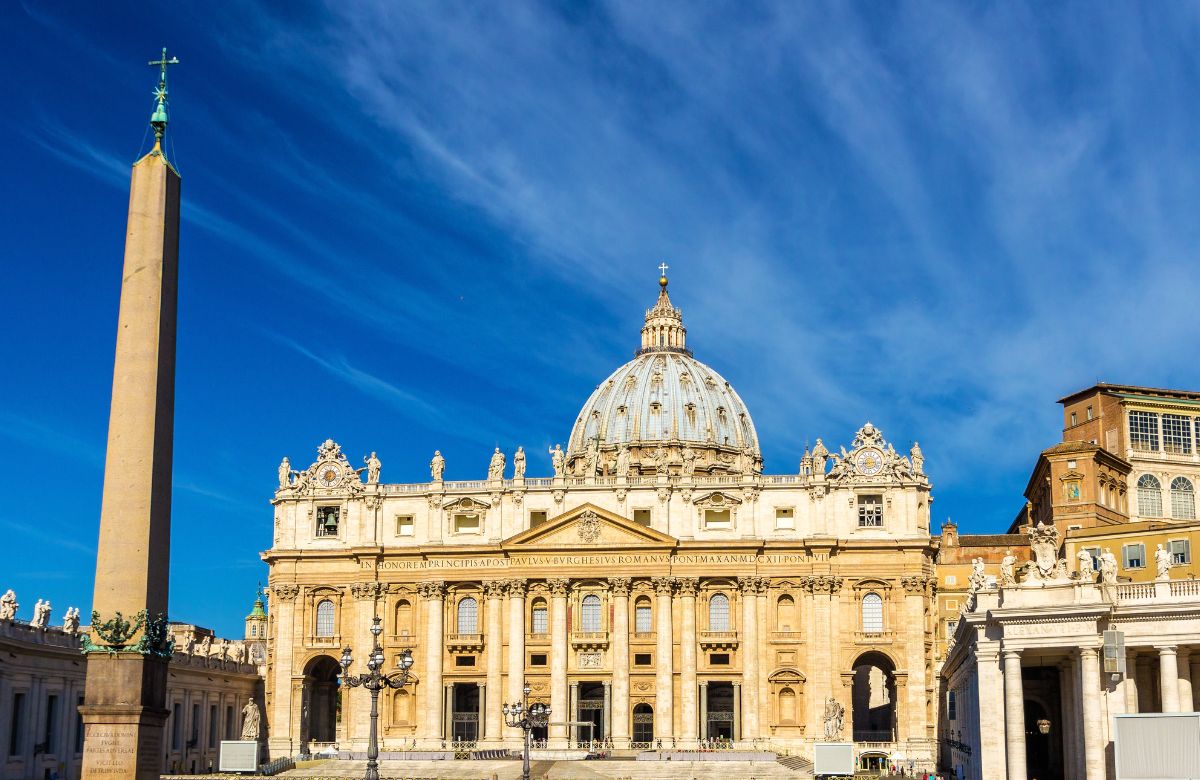Europe’s rich history is intertwined with stunning architecture that stands as monuments to the past. These landmark places in Europe have also been the subject of countless historical events and, in some cases, intriguing conspiracy theories. From hidden treasures to secretive societies, they have captured the imagination of conspiracy theory enthusiasts worldwide. While many of these theories may lack concrete evidence, these places in Europe offer a fascinating insight into the mysteries that surround these awe-inspiring structures:
1. Chartres Cathedral, France
This magnificent Gothic cathedral has inspired numerous conspiracy theories over the years. One popular belief suggests that the labyrinth pattern embedded in the cathedral’s floor hides a secret message or treasure map. Additionally, some theorists propose that the stained glass windows contain hidden knowledge or codes that offer a deeper understanding of esoteric wisdom.
2. St. Peter’s Basilica, Vatican City
The heart of Catholicism, St. Peter’s Basilica in Vatican City, is the subject of several intriguing conspiracy theories. Some speculate that hidden within its walls lies the evidence that challenges the legitimacy of the papacy or even the existence of alternative historical truths. Others assert that secret passages and chambers hold ancient relics, manuscripts, or even the Ark of the Covenant.
3. Sagrada Família, Barcelona, Spain
This church still has an ongoing work of art. However, the Sagrada Família is also enveloped in conspiracy theories. Some claim that the church’s architect, Antoni Gaudí, encoded hidden messages in its design. And these are said to be potentially related to sacred geometry or the esoteric knowledge of ancient civilisations.
4. Rosslyn Chapel, Scotland
Rosslyn Chapel, located in Midlothian, Scotland, has long been associated with various conspiracy theories. Many believe that hidden beneath the chapel lies the Holy Grail or the lost treasure of the Knights Templar. Additionally, others suggest that the chapel’s intricate carvings contain encrypted messages revealing esoteric knowledge.
Also Read: Europe’s Churches & Religious Places Struggling To Accommodate; Crowded With Tourist Throngs
5. Hagia Sophia, Istanbul, Turkey
The Hagia Sophia, once a church and later a mosque, has stirred conspiracy theories regarding its ancient origins and mystical significance. Some theorists claim that its construction is linked to hidden knowledge from ancient civilisations. While others suggest connections to extraterrestrial beings.
6. Basilica Of San Vitale, Ravenna, Italy
The Basilica of San Vitale has splendid mosaics and Byzantine architecture. Conspiracy theorists speculate that these mosaics contain concealed symbols and codes that point to lost ancient knowledge, extraterrestrial contact, or the existence of secret societies throughout history.
7. Stonehenge, England
The iconic Stonehenge, a prehistoric stone circle located in Wiltshire, England, has puzzled archaeologists and conspiracy theorists. Theories range from its origins as an astronomical calendar to the work of ancient aliens. Some speculate that the site holds hidden knowledge related to lost civilisations or even serves as a portal to other dimensions.
8. The Montsegur Castle, France
The Montsegur Castle, located atop a mountain in southern France, was the last stronghold of the Cathars during the 13th-century Albigensian Crusade. Legends suggest that the Cathars possessed sacred knowledge or holy relics, leading to numerous theories about hidden treasures or ancient secrets concealed within the ruins
Europe’s historic churches stand as both architectural wonders and windows into the past. While most of the conspiracy theories surrounding these churches lack solid evidence, they continue to capture the imagination of enthusiasts. Whether fact or fiction, these theories add a layer of fascination to already awe-inspiring structures.
So, have you visited any of these historical places in Europe?
Cover image credits: Canva

